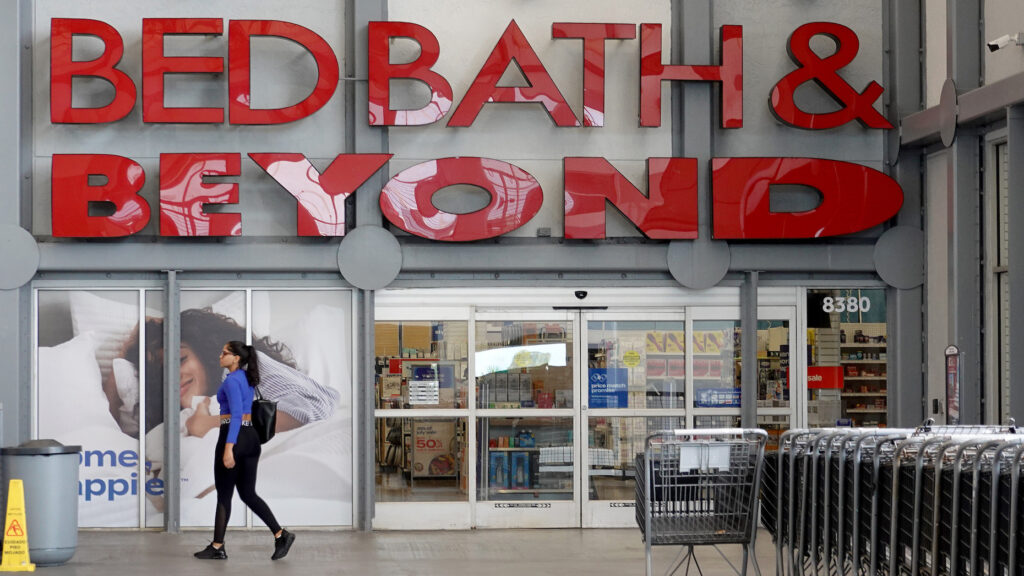Some sobering news for US shoppers: There’s little relief in sight on grocery bills.
Grocery prices jumped 13.5% in August from a year earlier, the biggest annual increase since March 1979, government data shows.
Leaders of major food manufacturers and analysts expect inflation to hover around this level for the rest of 2022.
Next year, the food inflation rate is expected to moderate, but that doesn’t mean prices will go down. Once prices hit a certain level, they tend to stay there or go up, but rarely go down.
Several factors contributed to the price spike. Growers say they pay higher prices for labor and packaging materials. Extreme weather conditions, such as drought or flooding, and diseases, such as the deadly bird flu, have damaged crops and killed laying hens, reducing supplies.
Even if some of these situations stabilize, it will take some time for these changes to reach consumers.
“There’s a lot of uncertainty,” said David Ortega, food economist and associate professor at Michigan State University. It is unclear when the war in Ukraine will end, or what impact weather conditions will have on crops in the future. “That’s one of the reasons why prices take longer to come down.”
Producers “don’t see the end of inflation in terms of labor and raw material costs,” said KK Davey, president of customer engagement at market research firm IRI. The company expects food inflation to rise between 5% and 10% next year.
In the meantime, demand is strong. Consumers may be able to opt out of some discretionary items, but they must eat. And paying higher grocery prices can still be cheaper than dining out, where menu prices are also rising (albeit at a slower rate). And many people are still working from home and consuming more of their meals there.
This imbalance means businesses can pass on higher prices to buyers without sales falling.
“The cycle will break when supply is high and demand moderates,” Davey said.
Companies continue to raise prices
“We expect near-term inflation to remain elevated,” Mondelez CEO Dirk Van de Put said on an earnings call this summer. The Oreo and Ritz maker said its energy, transportation, packaging and raw material costs remain high, and it announced further price increases to offset those increases.
General Mills, which makes everything from Cheerios to Blue Buffalo pet food, expects its costs to rise 14% to 15% for its fiscal year 2023, driven by higher prices for ingredients such as nuts, fruits and flavorings. The company is planning additional price increases for its retail customers.
So far, consumers haven’t balked at higher prices, CEO Jeff Harmening noted on an earnings call in September.
“So far, we haven’t seen any change in elasticities, which for us has been positive in the quarter,” he said. Elasticity refers to the ease with which customers change their buying behavior in response to higher prices. Consumers accepted the higher prices than General Mills would have expected, Harmening noted.
Between costs that keep rising and people that keep buying, there’s little reason for companies to discount their products.
“We believe the risk of a significant increase in promotions over the next two quarters is quite low,” Harmening said on the call.
For manufacturers to increase promotions, supply chain disruptions would need to stop and costs would need to come down significantly, he said. “We don’t see any of those things.”
Why grocery store prices are so sticky
In general, prices tend to increase over time. Government data shows that from 1974 to 2021, food prices only fell for two years. Every two years they have increased, although in some years the increase has been very slight.
“There is still a general price increase overall,” said Ortega, the food economist. “It’s just the nature of economics.”
Typically, though, grocery store prices rise about 2% or 3% a year, he said — a much slower pace than the increase that’s happening now.
In the past, consumers may not have noticed higher prices because their wages kept pace with increases. Currently, this is not the case.
“Consumer prices are rising faster than wages are rising,” he said. “What we are seeing now is really a cost of living crisis.”
Grocery prices in particular are sticky as well due to the difficulty of changing them.
When food manufacturers raise prices for retailers, the latter do not necessarily pass the prices on to consumers. Some may choose to keep prices low – if they can afford it – to draw customers into the store.
Retailers also don’t like raising prices bit by bit because it frustrates consumers, said Andy Harig, vice president for tax, trade, sustainability and policy development at IMF, an association of the ‘food industry.
“A lot of people are buying every week…and there’s a lot of consistency in what they’re buying,” he said. So when prices change, even slightly, “they really notice and feel those changes.”
When retailers change prices in stores, they must print new labels and enter the new values into their sales systems. Stores carry tens of thousands of different items, so when prices go up in different categories, making adjustments becomes a ton of work.
That means “when you see increases happening, they tend to stay put,” Harig said.
READ ALSO | ‘Curtain Up’ festival in Times Square celebrates the return of Broadway
———-
* Receive news from eyewitnesses
* Follow us on YouTube
* More local news
* Send us a news tip
* Download the abc7NY app for news alerts




